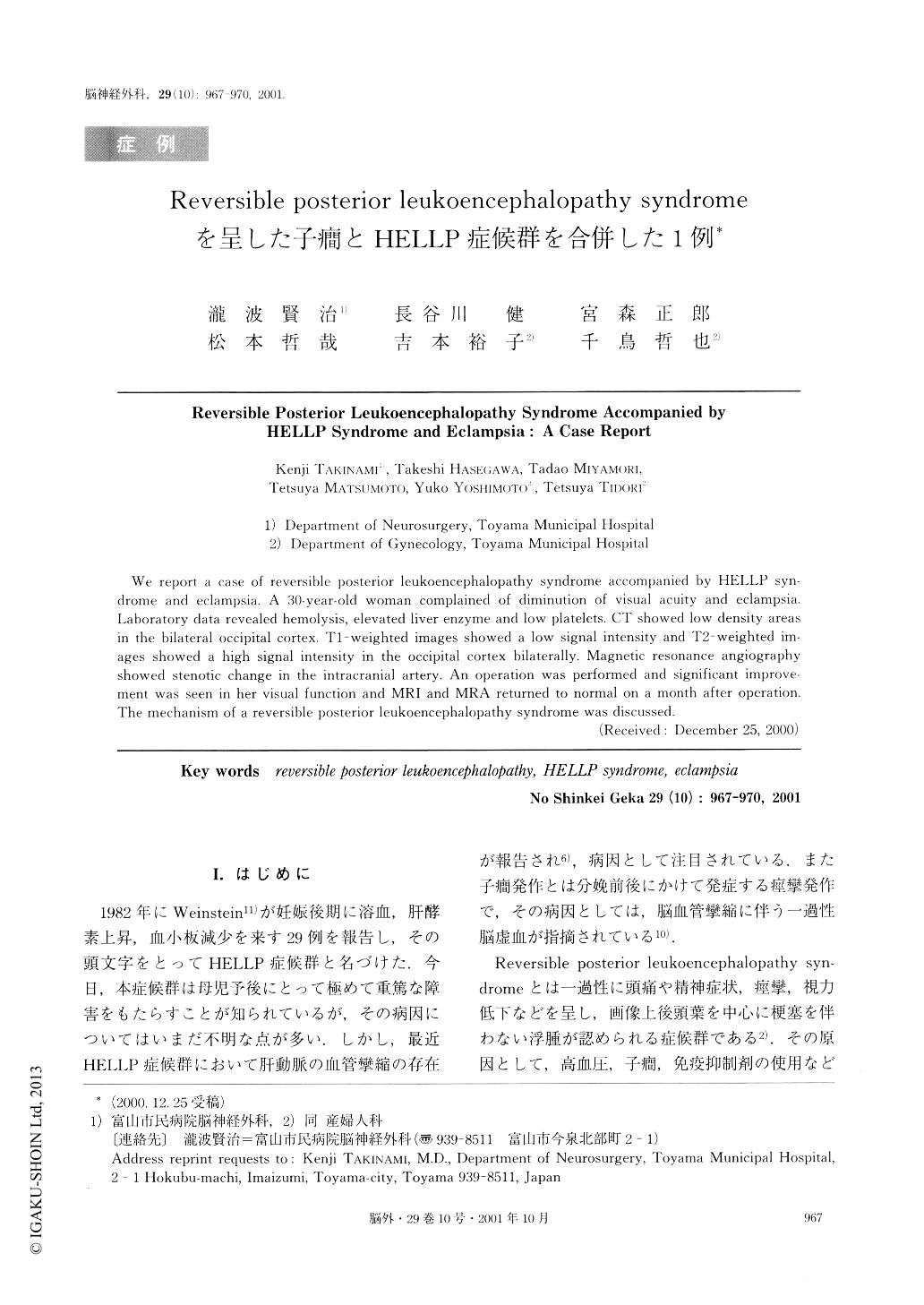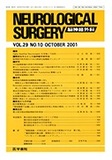Japanese
English
- 有料閲覧
- Abstract 文献概要
- 1ページ目 Look Inside
I.はじめに
1982年にWeinstein11)が妊娠後期に溶血,肝酵素上昇,血小板減少を来す29例を報告し,その頭文字をとってHELLP症候群と名づけた.今日,本症候群は母児予後にとって極めて重篤な障害をもたらすことが知られているが,その病因についてはいまだ不明な点が多い,しかし,最近HELLP症候群において肝動脈の血管攣縮の存在が報告され6),病因として注目されている.また子癇発作とは分娩前後にかけて発症する痙攣発作で,その病因としては,脳血管攣縮に伴う一過性脳虚血が指摘されている10).
Reversible posterior leukoencephalopathy syn-dromeとは一過性に頭痛や精神症状,痙攣,視力低下などを呈し,画像上後頭葉を中心に梗塞を伴わない浮腫が認められる症候群である2).その原因として,高血圧,子癇,免疫抑制剤の使用などが認められる.今回われわれは妊娠35週で子癇,視力障害およびHELLP症候群を発症し,MRI上後頭葉に異常信号を呈しMRAで頭蓋内主幹動脈の狭窄を認め,帝王切開分娩後に改善を認めた症例を経験したので報告する.
We report a case of reversible posterior leukoencephalopathy syndrome accompanied by HELLP syn-drome and eclampsia. A 30-year-old woman complained of diminution of visual acuity and eclampsia.Laboratory data revealed hemolysis, elevated liver enzyme and low platelets. CT showed low density areasin the bilateral occipital cortex. T1-weighted images showed a low signal intensity and T2-weighted im-ages showed a high signal intensity in the occipital cortex bilaterally. Magnetic resonance angiographyshowed stenotic change in the intracranial artery. An operation was performed and significant improve-ment was seen in her visual function and MRI and MRA returned to normal on a month after operation.The mechanism of a reversible posterior leukoencephalopathy syndrome was discussed.

Copyright © 2001, Igaku-Shoin Ltd. All rights reserved.


